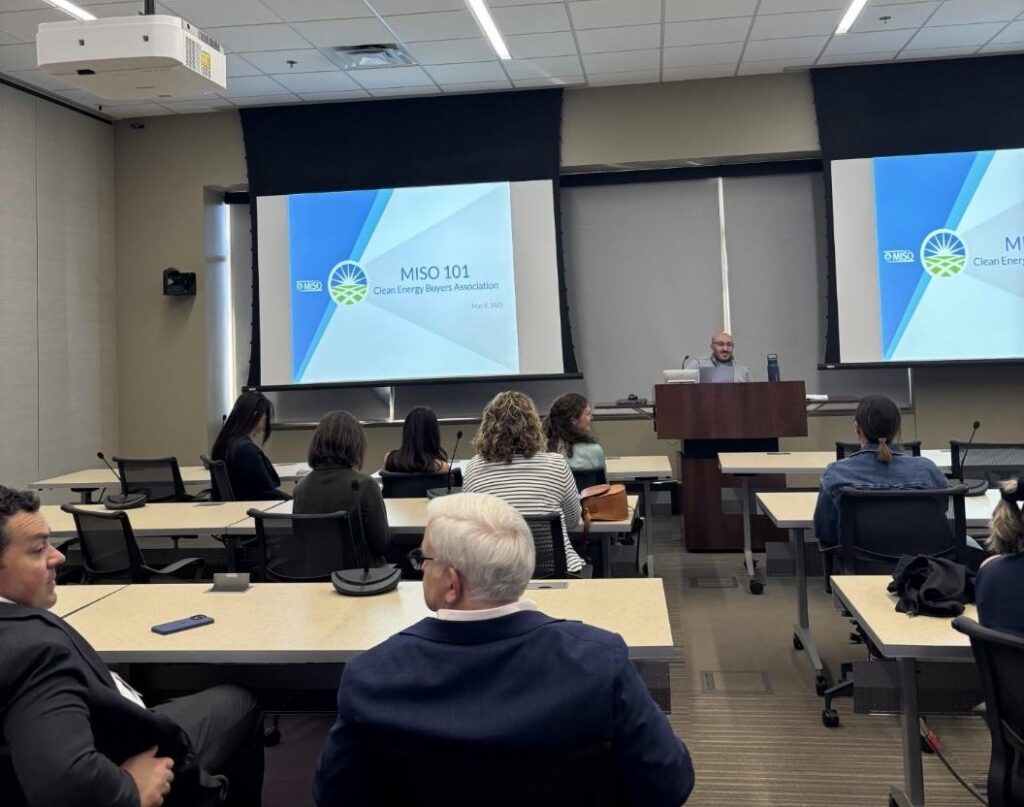Behind the Scenes with MISO: What We Learned on the Grid Operator Tour at CEBA Connect

At CEBA Connect: Spring Summit 2025, a small group of attendees had the rare opportunity to go behind the scenes with the Midcontinent Independent System Operator (MISO) and get a firsthand look at how the grid operator keeps the power flowing across a vast region — all while navigating the clean energy transition.
“MISO Does its Homework in Public”
That memorable quote from the tour set the tone for what makes MISO so unique. MISO doesn’t own the wires or the power plants — it manages the flow of electricity across 77,000 miles of transmission lines, ensuring reliability for more than 45 million people. Think of MISO as the air traffic controller of the electric grid: coordinating the movement of electricity from where it’s generated to where it’s needed, safely and reliably, 24/7/365.
But unlike air traffic control, MISO’s work is done out in the open — through a collaborative, stakeholder-driven process that brings together utilities, developers, regulators, and clean energy buyers.
Why Grid Planning is So Complex (and Important)
Getting a lot of stakeholders moving in the same direction takes time.
During the tour, MISO staff highlighted one of their biggest current challenges: the interconnection queue. Right now, over 350 gigawatts of new generation are waiting to be studied in the MISO region — an astounding number that reflects growing demand for clean energy and a surge in proposed wind, solar, and storage projects.
To tackle this “queue clog,” MISO has adopted a cluster study approach, grouping similar projects and studying them together at shared grid nodes. This helps streamline the process and makes it more efficient than the traditional “first-come, first-served” method.

Picking Up Speed — But Still Facing Headwinds
Compared to other regional grid operators, MISO has made strides in speeding up its interconnection process. But the scale of interest in clean energy — paired with aging infrastructure and regulatory complexity — means challenges remain.
Still, MISO is moving forward. The organization is focused on balancing three core goals: sustainability, reliability, and affordability. With historic levels of wind and solar integration (including a record solar peak in February 2025), it’s clear MISO is adapting to a new energy era.
A Shared Mission for a Cleaner Grid
For CEBA members, the tour was an important reminder: the energy transition doesn’t just require new technologies or bold climate commitments. It also requires deep collaboration — with grid operators like MISO who are building the future of power, one transmission study at a time. One of the most memorable moments of the tour was getting to see a MISO control room — the nerve center where grid operators monitor conditions in real time and keep the system balanced 24/7. Even better, MISO makes much of this data publicly available on its website, including real-time information on grid conditions, electricity demand, and the current mix of fuel sources. It was incredibly impressive to see that level of transparency and technical sophistication up close. To learn more about MISO and track live statistics check out their website and follow them on LinkedIn and X. A huge shout out to CEBA Connect: Spring Summit Sponsor, Sol Systems, for sponsoring this tour.
